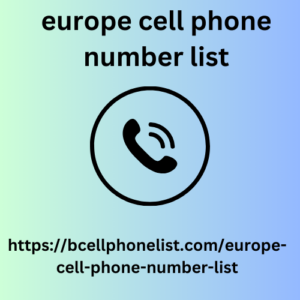The vast majority of modern website development companies try to honestly provide a flawless user experience. Some, on the contrary, go to great lengths to increase conversion. Up to deceiving customers in order to make them perform certain actions.
Cybercriminals pose a threat in all forms of digital interactions. Some unethical website development practices also border on criminality. By learning what “dark patterns” are and how to eliminate them, you can help your brand avoid this incredibly damaging phenomenon.
Dark patterns
User interface (UI) is one of the most important elements of web design. Websites and apps use dark UI/UX patterns to trick visitors into signing up or purchasing something by mistake. Using such tricks in the UI hides the real goals of the site and/or the corporation until it is too late.
Google has started penalizing sites that use “intrusive interstitials” like pop-up ads or dialog boxes to collect email addresses. These dirty europe cell phone number list methods have long been annoying users, and search engines have noticed.
Let’s take a look at the most common dark patterns.
1. Clickbait
Clickbait is one of the oldest tricks around, but users apre tandans pou peman still fall for it. It is web content (usually links) that is designed to pique the reader’s interest and entice them to click a button to go to a page with much less interesting or even irrelevant content.
Many people have mastered the art of creating misleading content. It is used to trick, fool, or confuse users and ultimately get them to take a specific action. The most common time we encounter this type of content is during the unsubscribe process for newsletters and marketing materials. Many sites redirect readers to an unsubscribe page to confuse them with a multi-step process and/or buttons with misleading names.
Clickbait uses intriguing content and keywords as bait to attract an audience. Once the reader bites, the company then lures them into by lists the trap, usually with pop-up ads and email forms. Clickbait articles do not deliver on their promises. In a sense, they are deceptive. They lure the reader in with catchy headlines to get them to click.
2. Confirm shaming
Confirm shaming (from English confirm – confirmation, shaming – to shame) is one of the most obvious dark patterns of modern websites. It manifests itself in the form of an email address (a pop-up window asking for an email before opening the page) with a message that is supposed to shame users who refuse.
Confirm shaming makes readers feel terrible for not entering their email address—in other words, for not complying with the company’s marketing strategy.
Conferm-shaming may seem like an innocent enough technique to convey a message, but in reality it causes frustration, dissatisfaction, and resentment among customers. Such pop-ups hurt sales and are considered unacceptable in modern web design.

